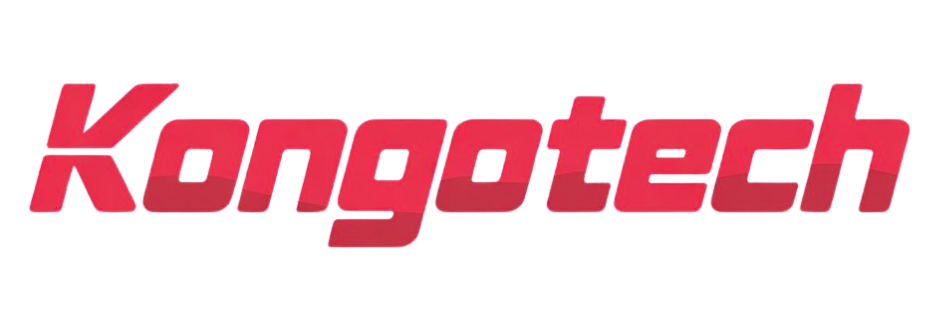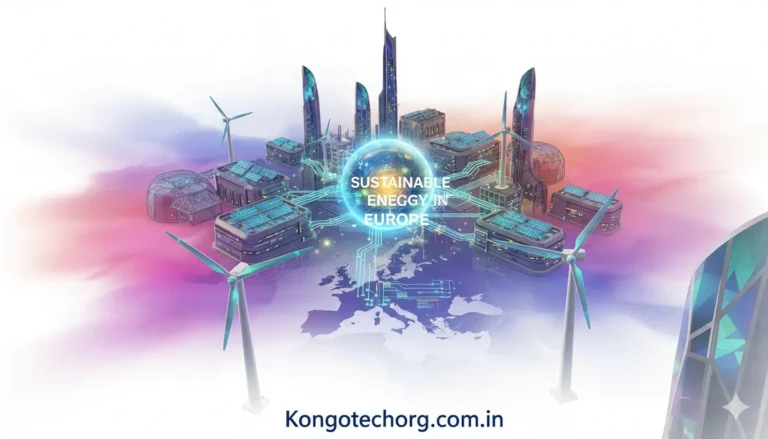Europe’s energy transition has moved from pledges to deployment. The EU has locked in a binding renewable energy target of 42.5% by 2030 (aiming for 45%), while member states accelerate wind, solar, storage, and grid expansions under the Green Deal and REPowerEU.
This guide explains the policies, technologies, and market signals shaping sustainable energy in Europe, with practical steps for policymakers, enterprise sustainability leads, investors, and students.
The policy scaffolding: where Europe is heading
The European Green Deal: the umbrella
The European Green Deal is the EU’s economy-wide strategy to reach climate neutrality, with linked packages on energy, industry, and transport. It anchors funding, standards, and timelines across sectors.
RED III: a higher 2030 renewables bar
The revised Renewable Energy Directive (RED III) set a binding EU target: at least 42.5% renewables in gross final energy consumption by 2030, with an aspiration to 45%. It entered into force in November 2023 and effectively doubles the EU’s renewable share this decade.
REPowerEU: from crisis response to structural shift
Originally drafted to cut Russian fossil fuels, REPowerEU has evolved into an acceleration plan for clean supply, efficiency, and grids including an EU action plan to speed grid rollout presented at end-2023.
Technology pulse check: wind, solar, storage, and grids
Wind: strong base, still scaling
Europe added 16.4 GW of wind in 2024 (12.9 GW in the EU-27), bringing total installed wind capacity to 285 GW across Europe (231 GW in the EU). Most additions were onshore; 2.6 GW was offshore. While supply chains faced cost pressure, the installed base keeps growing.
Solar and the changing power mix
By 2024, the EU generated more electricity from solar (≈11%) than coal (≈10%), marking a symbolic crossover; wind stood near 17% of EU power. In mid-2025, solar even topped the monthly power mix for the first time. The direction is clear, even if seasonal and weather effects persist.
Storage: from niche to necessary
Grid-scale and behind-the-meter battery storage is shifting from pilot to portfolio. Europe’s installed battery fleet reached ~61 GWh at end-2024, with analysts projecting a sixfold expansion toward ~120 GWh annual additions and ~400 GWh total by 2029 as flexibility markets mature.
Grids: the great enabler
High shares of variable renewables hinge on transmission build-out, interconnection, and advanced operations. ENTSO-E’s TYNDP 2024 identifies hundreds of transmission and storage projects critical for system adequacy, including 178 transmission and 33 storage projects analyzed for European needs.
Green hydrogen: targeting hard-to-abate
The EU is building a market for renewable and low-carbon hydrogen via standards and offtake support. The European Hydrogen Bank has run auctions to award production premiums and plans a third auction by end-2025; in parallel, the EU adopted a GHG methodology for low-carbon hydrogen in July 2025 to clarify accounting.
Who’s leading (and why it matters)
- Wind pace setters: Germany, Spain, the Nordics (notably Denmark and Sweden) for onshore growth; the North Sea countries for offshore clusters that blend ports, cable factories, and service hubs. The EU total continues to climb despite permitting and supply-chain friction.
- Solar surge: Germany, Spain, the Netherlands, Italy, and Poland cement the EU’s solar rise, driving the coal-to-solar crossover. Monthly records in 2025 underscore momentum—and the need for flexibility.
- Storage pioneers: Italy, Germany, the UK, and Ireland are expanding batteries to absorb mid-day solar and firm evening peaks, backed by capacity mechanisms and evolving ancillary services. Europe-wide build is accelerating from a 61 GWh base.
- Hydrogen hubs: Germany, the Netherlands, Spain, and Portugal are piloting electrolysis clusters and import corridors as auctions and standards reduce uncertainty. EU-level support (Hydrogen Bank) is designed to bridge first-mover cost gaps.
One-page comparison: Targets and system enablers (2025 snapshot)
| Pillar | 2030 target / milestone | 2024–25 reality check | What to watch next |
|---|---|---|---|
| Renewables share (RED III) | ≥42.5% of gross final energy (aspire 45%) | Target in force since Nov-2023 | National transposition detail; heat and transport quotas. |
| Wind & solar share of power | Rapid expansion to displace coal/gas | 2024: wind ~17%, solar ~11%; solar > coal | Supply chains, auctions, and grid queues. |
| Grids (TYNDP 2024) | Multi-country expansion & interconnectors | 178 transmission + 33 storage projects mapped | Permitting, cross-border cost allocation, digital ops. |
| Battery storage | Multi-GW annual additions | 61.1 GWh installed by end-2024; steep growth outlook | Market design for flexibility; revenue stacking. |
| Green hydrogen | Early volumes for industry & RFNBOs | EU auctions continuing through 2025 | Offtake contracts, certification, pipeline access. |
Market signals: what investors and enterprises should read
First, capex deflation in solar modules and stabilizing turbine supply chains are improving project economics; nevertheless, grid connection queues and permitting remain gating factors. Second, monthly solar peaks highlight the need for storage, demand response, and interconnection to avoid curtailment.
Third, early hydrogen auctions are creating price discovery and path-to-bankability for electrolysis. Finally, REPowerEU grid actions show policymakers recognize infrastructure as the bottleneck, not generation potential.
Related: MT5 Trading: The Practical Guide for 2025
FAQ
1) What are the EU’s core 2030 renewable targets?
Under RED III, the EU must reach at least 42.5% renewables by 2030, with a 45% aspiration. Member states set sectoral pathways to deliver this.
2) How fast are wind and solar growing in practice?
In 2024, Europe added 16.4 GW of wind; the EU’s power mix was ~17% wind and ~11% solar, with solar out-generating coal that year.
3) Why is grid investment suddenly everywhere?
Because integration is the constraint. ENTSO-E’s TYNDP 2024 catalogs cross-border lines and storage needed to move low-cost renewables to load centers.
4) Is storage really bankable now?
Yes—policy and market design are improving. Europe had ~61 GWh installed by end-2024, and analysts project rapid growth through 2029 as services stack.
5) What is the European Hydrogen Bank?
It’s an auction mechanism that pays producers a premium for renewable hydrogen; a third auction is planned for end-2025, complementing updated EU GHG rules for low-carbon hydrogen.
6) How does the UK fit into this picture?
While outside the EU, the UK’s offshore wind ambitions and interconnectors influence European power flows; investors should track UK auctions and GB capacity mechanisms alongside EU grid plans. (General context; verify project-level data before investing.)
Conclusion
Europe’s transition now hinges less on whether wind and solar can scale and more on how quickly grids, storage, and markets adapt. The policy compass (Green Deal, RED III, REPowerEU) is set; the technology stack (wind, solar, batteries, hydrogen) is maturing; and the power mix is already tilting toward renewables.
To sustain momentum, policymakers must cut grid timelines, enterprises should pair procurement with flexibility, and investors need bankable offtake and market design. Above all, success will be measured by system integration—the quiet work that makes clean generation dependable, affordable, and secure.




